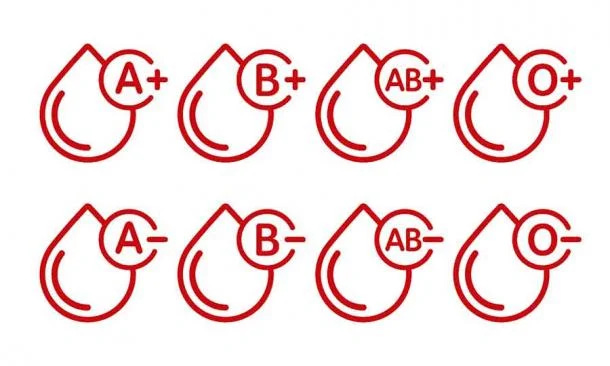Neanderthals and the Blood Connection: Could Their Rh Factor Have Sealed Their Fate?
Manage episode 462788117 series 3444207
For decades, scientists have studied the decline and eventual disappearance of Neanderthals, our closest extinct relatives. A recent study published in Scientific Reports1 offers a unique perspective, focusing on the genetic makeup of their red blood cells. The research suggests that a rare blood group found in Neanderthals, linked to potential fatal complications in newborns, might have contributed to their downfall.

The Role of Blood in Survival
Blood types, defined by proteins and sugars (antigens) on red blood cells, are essential for human health and survival. Most people are familiar with the ABO blood typing system (A, B, AB, and O) and the Rh factor, which adds the “positive” or “negative” designation. These classifications are key for safe blood transfusions, but they also play a role in pregnancy.
In modern humans, an Rh-negative pregnant person carrying an Rh-positive fetus can face complications from Rh incompatibility. The parent’s immune system may attack the fetus’s red blood cells, leading to hemolytic disease of the newborn (HDN), which can cause severe anemia, brain damage, or even death.
Today, treatments like immunoglobulin therapy prevent such complications. But for ancient humans and Neanderthals living over 100,000 years ago, such medical interventions were unimaginable.
Rare Blood Types in Neanderthals
The study, led by Stéphane Mazières, a population geneticist at Aix-Marseille University, analyzed the genomes of dozens of Neanderthals, Denisovans, and early Homo sapiens. It revealed that Neanderthals possessed a unique Rh variant that is almost unheard of in modern humans.
“Neanderthals have an Rh blood group that is very rare in modern humans,” Mazières explained.
This rare RhD variant was incompatible with the Rh types found in Denisovans and early Homo sapiens. Such incompatibility, the researchers argue, may have had significant consequences.
“For any case of inbreeding of a Neanderthal female with a Homo sapiens or Denisovan male, there is a high risk of hemolytic disease of the newborn,” Mazières said.
The findings suggest that interbreeding between Neanderthals and other human groups could have resulted in high infant mortality rates, potentially destabilizing Neanderthal populations over time.
The Evolutionary Advantage of Diversity
Modern humans (Homo sapiens) appear to have undergone rapid changes in their blood cell genetics after leaving Africa roughly 70,000 years ago. These adaptations may have provided advantages in new environments, such as Eurasia’s varied climates and ecosystems.
The research team noted that early Homo sapiens developed diverse Rh gene variants while living on the Persian Plateau, a region that served as a crossroads for early human migration. These variations likely provided resilience to environmental pressures and diseases.
Neanderthals, on the other hand, remained largely isolated, which may explain why their blood types showed little evolution over tens of thousands of years.
“Neanderthals’ general isolation could explain why their red blood cells did not evolve much,” Mazières noted.
Blood and the Bigger Picture
The study’s findings align with archaeological and genetic evidence suggesting that Homo sapiens experienced a demographic expansion and cultural innovations during the same period. New genetic lineages and advanced stone tool industries emerged between 70,000 and 45,000 years ago, pointing to a flourishing population.
In contrast, the lack of genetic diversity in Neanderthals’ red blood cells may reflect a population in decline. Inbreeding and reduced genetic variation could have left Neanderthals vulnerable to environmental changes and competition with modern humans.
“This lack of diversity could indicate inbreeding and declining population numbers, eventually leading to the extinction of these groups,” Mazières explained.
A Window into Our Shared Past
The study highlights how the tiniest details—like blood type—can shape the course of human history. Understanding the genetic differences between Neanderthals, Denisovans, and early humans not only sheds light on their interactions but also reveals the delicate balance of survival in prehistoric ecosystems.
The interplay between genetics, environment, and culture continues to shape human evolution. Research like this reminds us of the shared history embedded in our DNA and offers clues to how our ancestors adapted and thrived while others faded into extinction.
Related Research
**Hawks, J., & Cochran, G. (2006). “Dynamics of Adaptive Introgression from Archaic to Modern Humans.” Journal of Human Evolution.
DOI: 10.1016/j.jhevol.2006.04.002**Varki, A. (2009). “Uniquely Human Evolution of Sialic Acid Genetics and Biology.” Proceedings of the National Academy of Sciences.
DOI: 10.1073/pnas.0904843106**Mendez, F. L., et al. (2016). “The Divergence of Neanderthal and Modern Human Y Chromosomes.” The American Journal of Human Genetics.
DOI: 10.1016/j.ajhg.2016.02.023
These studies complement the current research, offering insights into the genetic interplay that shaped human evolution and interactions with other hominin species.
Mazières, S., Condemi, S., El Nemer, W., & Chiaroni, J. (In Press). Rapid change in red cell blood group systems after the main Out of Africa of Homo sapiens. Scientific Reports. https://dx.doi.org/10.1038/s41598-024-83023-0
11 епізодів




